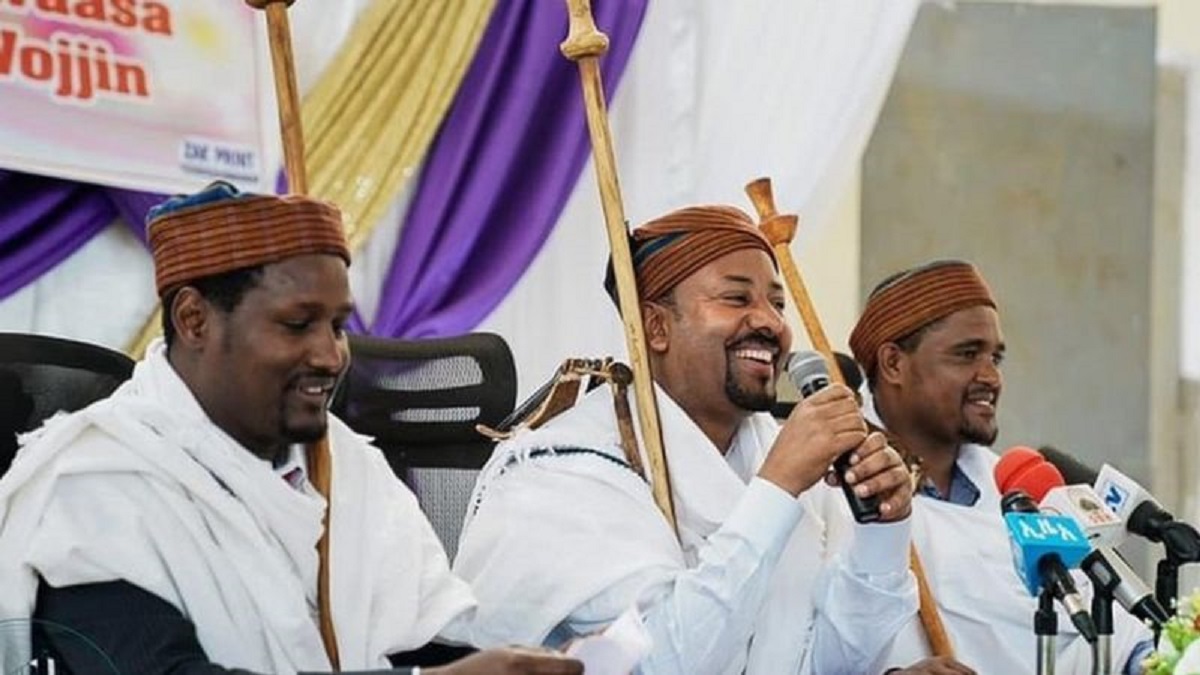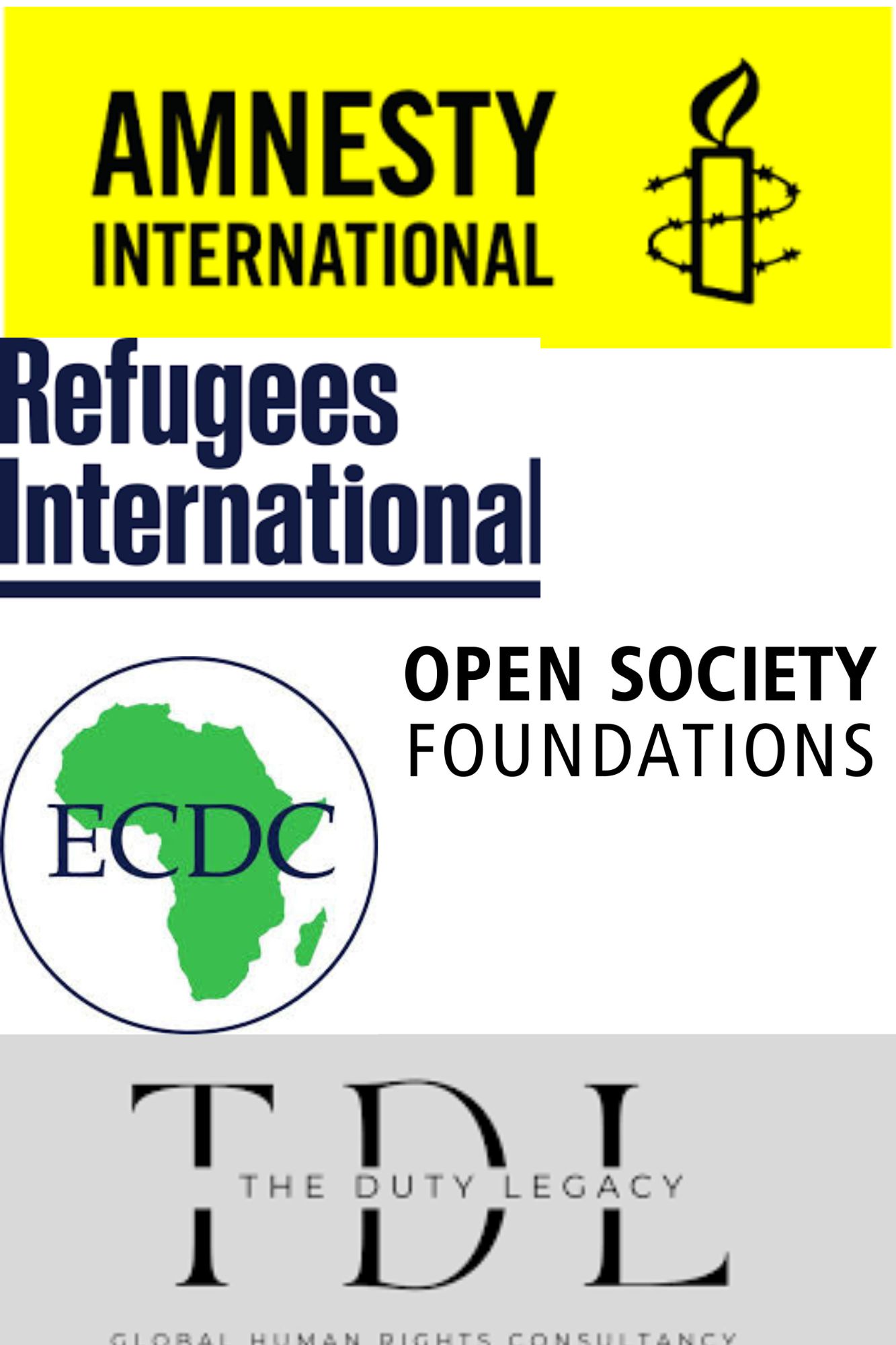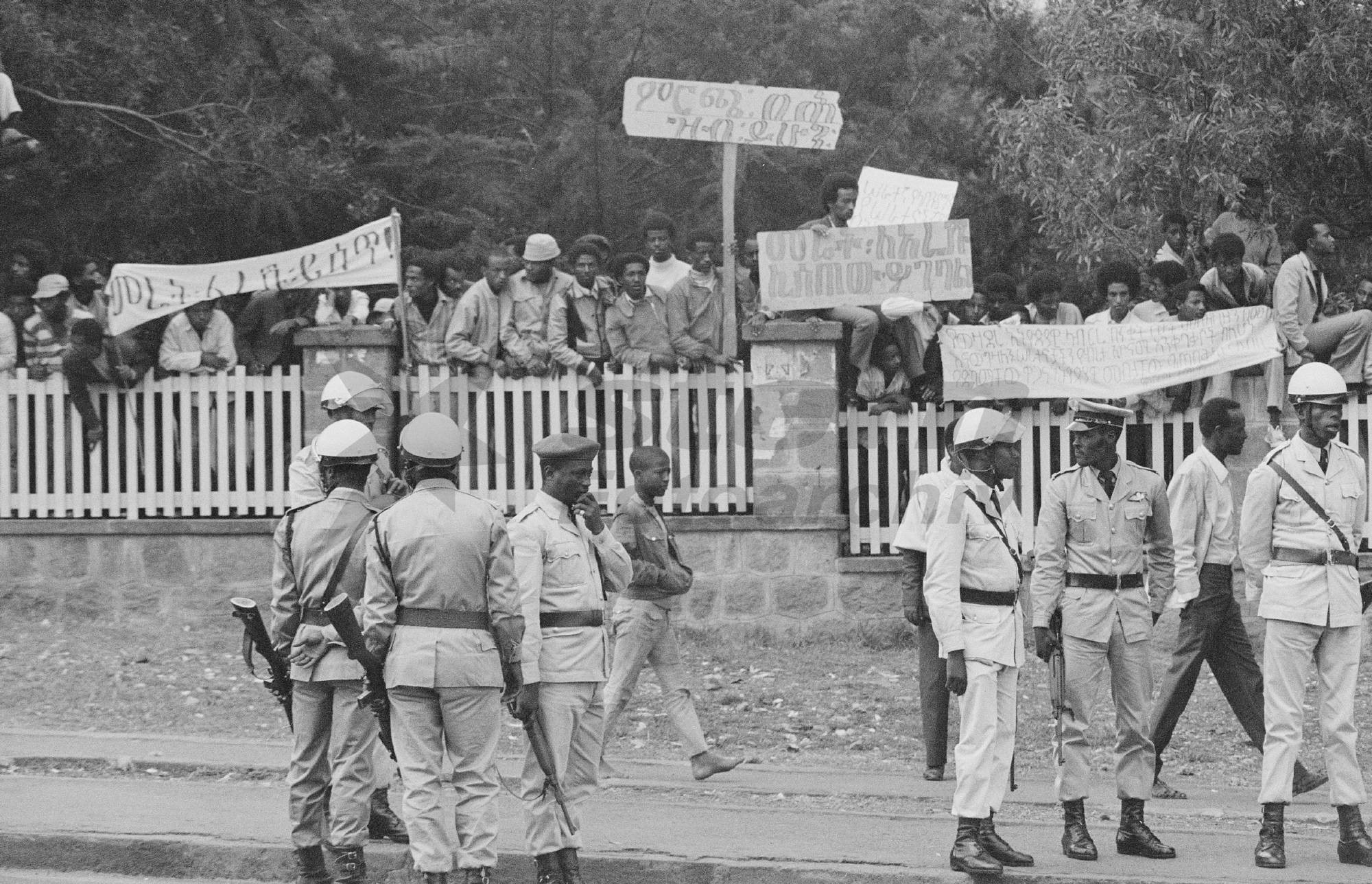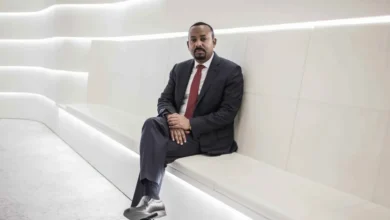
This serves as a direct response to Asafa Jalata’s recent op-ed, titled “Characterization of Abiy-led Ethiopian ruling elites as ‘Oromummaa government’ published on Addis Standard on Oct 20, 2023, which I find to be a feeble attempt at rewriting history and promoting ‘alternative facts.’ While I initially hesitated to dignify this op-ed with a response, I consider it crucial to use the opportunity to send a clear message to Oromo elites. The era where they concoct unfounded historical and political narratives with impunity is waning.
Our politics has evolved, with these narratives now being challenged and falling apart at the slightest scrutiny. Lencho Bati’s recent statement, “We had to dismantle Ethiopia, to build Oromummaa,” underscores the pressing need to critically evaluate the harsh, expansionist, and divisive nature of the Oromummaa ideology. It has and is posing a clear threat to the existence of many ethnic groups, including the Amhara, Gurage, Gambella, Wolayita, Somali, and Sidama. Hence, it is not only in the interest of the Ethiopian state but, more crucially, in the interest of safeguarding the survival of every ethnic group that these fallacious ‘Oromummaa narratives’ be deconstructed.
The op-ed in question is rife with untruths, contradictions, and a distorted narrative. Yet, let us discuss some of the key points one by one, starting with Dr. Asafa’s endeavor to define Oromummaa on five different levels. Dr. Asafa posits, “Every Oromo has the primary form of Oromummaa, and most Oromos speak the same language, called Afaan Oromoo, and claim a common historical and cultural background. As the total expression of Oromo peoplehood, Oromummaa has been developed from the historical, cultural, religious, and philosophical experiences of Oromo society.” This assertion warrants a close examination by asking two important questions:
First, is there a credible historical basis to assert the existence of a fully-formed and unified Oromo identity? Second, is there a common historical and cultural background shared by Oromos?
The assertion that a unified Oromo identity existed to the extent of claiming an Oromo nation not only lacks historical validity, it is also laughable. It’s well-documented that multiple Oromo societies, each with their unique religious histories and historical narratives, coexisted. These societies comprised over sixty Oromo tribal and clan groups, with some loosely connected through confederacies and others entirely independent. While a few of these tribes and clans shared common religious and spiritual myths, along with traditional stories, many had their distinct narratives. Consequently, the notion of a unified Oromo identity or nation in history becomes untenable. There is no record of an empire, state, or internationally recognized nation that administered itself under a common Oromo banner. In truth, these diverse Oromo groups often found themselves in competition or even at war with one another, making the idea of a continuously self-administering nation under a unified identity nothing more than historical revisionism.
Although the previous point partially addresses the second question of a common historical and cultural background, it’s essential to explore how Oromo tribes expanded and the impact on indigenous ethnicities and tribes subjected to Oromo invasions.
Despite the desires of Dr. Asafa and other Oromo elites to portray present-day Oromia as a smaller rendition of the non-existent historical ‘Oromo Empire/Nation’, the reality is quite different. Oromia’s contemporary territory and the majority of the land inhabited by Oromo people in present-day Ethiopia have indigenous owners. We are all familiar with how Oromo tribes initiated a large-scale expansion into various regions of Ethiopia during the 16th century, a period recognized as the Oromo Expansion. Unfortunately, this expansion stands as one of the most brutal and genocidal invasions documented in history.
As Oromo tribes pushed into southern, western, eastern, and northern Ethiopia, they engaged in the mass killing of entire populations, mutilation of men and boys as grim tokens of their ‘warrior spirit’, and the obliteration of distinct cultures. Even those cultures and communities that managed to survive this onslaught were not permitted to maintain their unique identities under Oromo tribal dominance. They were compelled to adopt a singular language, Oromigna, and were forcibly assimilated into the Oromo tribe or clan through a cultural system known as Mogassa. While the term “adoption” may sound benign, the actual process closely resembled a brutal assimilation effort where communities were coerced into relinquishing their culture, language, history, and identity. Millions underwent the transformation of being “made Oromo” within the span of a century.
The list of cultures, peoples, and kingdoms erased by the Oromo Expansion is extensive and includes the likes of the Warjhi, Gafat, Damot, Hubat, Harla, Hargaya, Gidaya, and Limmu-Ennarea, among numerous others. The present-day Oromia region or the imaginary ‘Oromo Nation’ is a graveyard of these aforementioned cultures and peoples. So, what is the common cultural or historical background Oromo Elites are talking about? Such a claim not only disrespects the memory of the cultures and peoples eradicated but also underscores our obligation to help surviving descendants of affected peoples to recall their history and liberate themselves from the language and culture forcibly imposed upon them.
Dr. Asafa also asserts that “Basic Oromummaa is also built on personal, interpersonal, and collective connections within Oromo society. The Ethiopian colonial state has attempted to suppress these connections for one century and a half.” It’s crucial to scrutinize the terminology “Colonial Settlers” employed here which is use frequently by Oromo elites to refer other Ethiopians living within Oromia. This phrase is a genocidal term, serving as a prelude to mass dislocation, massacre, and forced assimilation –for the purposes of “cleansing” Oromia and molding it into a homogenous society, reminiscent of the 16th-century actions of their forebears.
For these Oromo elites, history appears to commence only a century and a half ago. However, the legacy of Oromo expansions has left indelible scars on the ethnic composition and settlements of people within present-day Ethiopia. It’s essential to underscore the irony in labeling other Ethiopians as settlers, while the very foundations of Oromia and Oromo settlements rest upon lands that were historically inhabited by indigenous communities – communities that were either eliminated or forcibly dislocated yet still endure in the shadows of Oromo dominance.
Dr. Asafa proceeds to level accusations against the “Ethiopian Colonial State” of “limiting the transmission of Oromo cultural experiences from generation to generation.” He goes even further in his second level of defining Oromummaa, contending that “Ethiopianism as an ideological hegemony has been imposed on the Oromo via physical coercion, including terrorism, mental genocide, and other political and cultural mechanisms.” This paints a vivid picture of what historical revisionism looks like, where the accuser, appears to be oblivious to the actions of his Oromo forefathers, Aba Gaddas, who engaged in the elimination of multiple cultures and carried out mental genocide against the survivors of their brutality and their descendants. The Irony is palpable (የአብዬን ወደ እምዬ ልክክ).
It’s intriguing that Dr. Asafa seems to overlook the historical fact that the Ethiopian State, while far from being a utopian entity, managed to preserve and maintain more than 80 distinct ethnic groups during its existence. In stark contrast, the Oromo tribes and clans, upon expanding into new territories, often demonstrated an inability to tolerate the existence of other ethnic groups within the areas they administered.
In this historical context, it’s essential to recognize that the mere existence of the Oromo language and as an ethnic group today stands as a testament to the inclusive and tolerant nature of the Ethiopian state, especially when compared to the actions of Oromo tribes and clans, which frequently resulted in the suppression and assimilation of other cultures. While I harbor no illusions about portraying the Ethiopian empire as a flawless utopia, no empire ever is, if we are judging by today’s standards, which Dr. Asafa is trying to do, the Ethiopian Empire emerges as one of the more tolerant states of its time.
The Ethiopian state extended its protective umbrella over more than 80 diverse ethnic groups, including the Oromo, shielding them from the perils of European colonialism that would have erased most of them. Can we say the same about the “Oromo Nation”? The list of cultures and peoples I mentioned above are enough proof. The false claims made by Oromo elites only demonstrate their willingness use any means including fabricating history for the purposes of their hegemonic aspiration. Moreover I don’t know how he defines democracy when he asserts “…the principles of egalitarian Oromo democracy of the gadaa/siqqee” , however a system that is revolted by other cultures often resorts to assimilation or elimination rather than fostering genuine inclusivity cannot be considered moral let alone a democracy.
In his third level of attempting to define Oromummaa, Dr. Asafa emphasizes the significance of Oromo cultural capital, which he contends is vital for the liberation and cognitive liberation of the Oromo society. He notes, “This Oromummaa-based knowledge, or Oromo cultural capital, reveals the importance of accessing the Oromo knowledge bank, which has accumulated Oromo cultural traditions over centuries to facilitate knowledge development for liberation and cognitive liberation among Oromo society.”
However, it’s essential to recall his earlier claim, where he accused the Ethiopian State of perpetrating “Mental Genocide” and implementing policies to uproot basic Oromummaa. This raises a critical question: how were Oromo cultural traditions allowed to accumulate over centuries if, as he suggests, the Ethiopian State was actively engaged in their destruction?
The dichotomy presented here is striking; it implies that either the Ethiopian State’s suppression of Oromummaa and Oromo culture is a gross fabrication, or there’s an inconsistency in Dr. Asafa’s assertions. If the disorganized, disunited Oromo tribes were capable of eliminating cultures, a well-documented historical fact, then it would have been easy for the well-organized Ethiopian state to eliminate Oromo cultural traditions or Others for that matter. The fact that Dr. Asafa himself attests to the rich history and traditions of the Oromo is a testament to the extraordinary diversity and pluralism that the Ethiopian state, by the standards of its time, upheld and preserved.
It’s no wonder that many find it challenging to view Oromo elites as serious intellectual figures. They are busy weaving fictional narratives that align with their narrative rather than confront the unvarnished historical facts.
In his fourth and fifth level of definition, Dr. Asafa notes, “Oromummaa, as a national project, mobilizes the nation to build the national culture, history, political economy, sovereignty, and ethos that are the markers and emblem of the Oromo nation.” And “global Oromummaa, expands the principles of freedom, justice for all, national self-determination, and egalitarian multinational democracy beyond the Oromo nation to our neighbors and the global community.” However, it’s evident that these statements contain inaccuracies and historical misrepresentations. While Dr. Asafa preaches about Oromummaa’s intention to create a “national culture and ethos emblematic of the Oromo nation”, he fails to address how this impacts the millions of non-Oromo Ethiopians residing within the Frankenstein’s monster-esque entity he calls the “Oromo nation.” To many non-Oromos, this national project resembles an attempt by contemporary Oromo elites to impose their language, religion, and cultural traditions, much like their predecessors did to numerous cultures and peoples over 400 years ago.
Furthermore, the idyllic picture painted by Oromo elites, as Dr Asafa says it “… expanding egalitarian multinational democracy beyond the Oromo nation to our neighbors”, doesn’t align with historical realities. Since its establishment in 1991, the behavior of the Oromia region, particularly in the past five years, contradicts these claims. There have been instances where Oromo elites brazenly advocated for the annihilation of the Amhara people, or asserted that Oromo culture was being practiced in the Gurage zone after 150 years, implying their intent to gradually eradicate Gurage identity. For example, the ruling Oromo party has resisted the Gurage people’s request to become a self-administered region. Instead, they are facing invasion by Oromo forces and the threat of having a foreign culture imposed upon them. Regions such as Somali, Amhara, and Sidama have also experienced violence and invasion by Oromo regional forces in attempts to expand Oromia’s territory. These actions contradict the notion of being champions of “self-determination and promoters of multinational democracy beyond the Oromo nation to neighboring regions.”
It’s worth considering if Dr Asafa is aware how this “spreading democracy to our neighbors and democracy” sounds like. Where have we heard that before? Hmm.
Dr. Asafa also expresses his disappointment with certain “Ethio-Amhara elites” who draw parallels between “Oromumma and Nazism.” It’s essential to examine whether there are any resemblances between Oromumma and Nazism. Nazism gained notoriety for its ethnocentric perspective, proclaiming the superiority of the Aryan race and attributing many of Germany’s and the world’s problems to the Jewish population. Oromumma, on the other hand, places the Oromo ethnic group on a pedestal, portraying them as morally virtuous, as though they are a group devoid of historical wrongdoings. This suggests a mentality of superiority. Oromumma similarly posits that the challenges faced by the Oromo and other ethnic groups within the Ethiopian state are primarily the fault of an allegedly devious ethnic group, the Amhara. Both Nazism and Oromumma employ the creation of a scapegoat as a means to explain their problems and historical deficiencies.
Another striking similarity between Nazism and Oromumma is their insatiable thirst for brutal expansion. Much like Nazi Germany initiated conflict with its neighboring nations in pursuit of territorial expansion, Oromumma has demonstrated expansionist tendencies, as previously mentioned. In essence, both ideologies share a common thread in their contempt for other cultures while paradoxically portraying themselves as saviors. They rely on the creation of a common enemy to mobilize their constituents through hatred and exhibit hegemonic and expansionist inclinations, making them akin to two sides of the same coin.
The remainder of the op-ed is dedicated to an incredibly arduous argument in an attempt to assert that the Abiy/OPP-led regime is not an Oromummaa regime. Dr. Asafa twists himself into a pretzel to construct falsehoods that can be easily debunked with a simple online search, all to make his point. For instance, he tries to obfuscate the five-year-long mass murder and ethnic cleansing of Amhara people within Oromia by claiming that the victims were, in fact, Oromos killed by Fano forces. This assertion is nothing short of astonishing, given that the same government he asserts was brought to power by the Oromo “Qeroo” movement is supposedly aiding and abetting Amhara forces within Oromia. Can you imagine the disciples they have baptized in a culture of hatred for the past 50 years remaining conspicuously silent? Oromo elites appear to be following in the footsteps of Oromo tribes of the past by systematically erasing communities from the face of the earth. The only difference now is that they attempt to conceal their actions by publishing what can only be described as nonsensical ‘intellectual work’. In this version of the “Oromo nation,” you are hunted and killed as an Amhara, yet you miraculously become an Oromo victim once your lifeless body is all that remains.
Yet another preposterous endeavor by Dr. Asafa involves his attempt to draw a distinction between the OLF and the current regime. Dr. Asafa may persist in his falsehoods, but the reality is that the OLF has seamlessly integrated itself into this ruthless Oromummaa regime. Lencho Letta, the founding father of the OLF, now serves as a trusted advisor to the prime minister. Lencho Bati, a former top-level OLF official, holds the position of Ethiopian Ambassador to Saudi Arabia. Meanwhile, Kejela Merdassa, the current leader of the OLF, has assumed the role of Minister of Culture and Sports. The list goes on. Any intellectual worth his salt would have steered clear of this subject entirely, as this assertion alone ought to disqualify this ‘rant manifesto’ masquerading as an op-ed.
From my perspective, if there is any division among Oromo elites, it generally stems from power struggles rather than significant ideological differences. Even variations in policy tend to revolve around the pace at which non-Oromos should be eliminated from the so-called “Oromo Nation,” or certain factions within the Oromo elite expressing dissatisfaction with the Oromummaa regime’s perceived leniency in dealing with the Amhara, despite the ongoing atrocities and displacement. An example of these non-ideological differences is when one observes the OPP regime cooperating with OLA/Shanee in the invasion of parts of the Amhara region and other neighboring areas.
As previously mentioned, Dr. Asafa asserts that this op-ed was penned to “disprove” the characterization of the Abiy-led regime as an ‘Oromummaa government.’ I understand the desperation– this regime has faced international isolation, earned the disapproval of nearly all non-Oromo ethnic groups, has an abhorrent human rights record, and stands accused of perpetrating genocidal acts against non-Oromos, particularly the Amhara, in the Oromia region. To compound their challenges, the Amhara, whom they had long scapegoated with false narratives, genocidal rhetoric, and violence, have initiated an irreversible resistance movement that not only poses a significant threat to the current Oromummaa regime but also endangers the very foundations of the Oromummaa ideology. Given these circumstances, it’s no wonder they seek to distance themselves from the present regime.
However, it is crucial for Oromo elites to understand that this regime’s spectacular failure can be directly attributed to its adherence to the Oromummaa ideology. Every Oromo elite who has played a role in expanding the “Oromummaa ideology and the political arena”, as Dr. Asafa notes, bears responsibility for the events of the past five years. The unchecked ambition of Oromo elites to establish the empire they believe they are owed – the empire their forebears failed to create – lies at the heart of the mass killings of Amharas in Oromia and the perilous situation threatening neighboring ethnic groups.
Oromummaa has a tendency to project its own transgressions onto its victims. When Oromummaa accuses others of expansionism, hegemony, or of being unitarist, it is often a prelude to what it intends to do against the accused. This behavior is called “accusation in a mirror” (AiM) or mirror politics. Kenneth Marcus defines it as “a common technique for inciting genocide by accusing one’s intended victims of precisely the crimes that one intends to commit against them.” Few concepts better encapsulate the character of the Oromo elite & the essence of Oromummaa ideology than the concept of accusation in a mirror (AiM).




